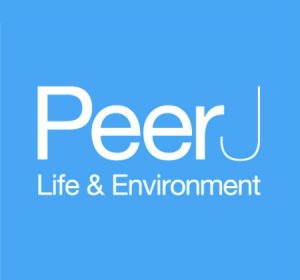Publications

Multimodal sensorimotor assessment of hand and forearm asymmetries: a reliability and correlational study
Authors: Pablo Bellosta-Lopez 1, Julia Blasco-Abadia 1, Lars L. Andersen 2, 3, Jonas Vinstrup 2, Sebastian V. Skovlund 2, 4, Victor Domenech-Garcia 1
Affiliations:
- Faculty of Health Sciences, Universidad San Jorge, Villanueva de Gallego, Zaragoza, Spain
- National Research Centre for the Working Environment, Copenhagen, Denmark
- Department of Health Science and Technology, Aalborg University, Aalborg, Denmark
- Department of Sports Science and Clinical Biomechanics, University of Southern Denmark, Odense, Denmark
Journal: PeerJ - Life & Environment - May 2024, Volume 12, Article no. e17403 (DOI: 10.7717/peerj.17403)
-
Field & Applications:
- Medical
- Reliability
- Validity
- Normatives
- For the muscle mechanical properties of the dominant and non-dominant sides, reliability was ‘excellent’ for the frequency and stiffness parameters (ICC: 0.91–0.96), and ‘good’ to ‘excellent’ for the decrement (ICC: 0.86–0.91).
Background: Effective rehabilitation of upper limb musculoskeletal disorders requires multimodal assessment to guide clinicians’ decision-making. Furthermore, a comprehensive assessment must include reliable tests. Nevertheless, the interrelationship among various upper limb tests remains unclear. This study aimed to evaluate the reliability of easily applicable upper extremity assessments, including absolute values and asymmetries of muscle mechanical properties, pressure pain threshold, active range of motion, maximal isometric strength, and manual dexterity. A secondary aim was to explore correlations between different assessment procedures to determine their interrelationship.
Methods: Thirty healthy subjects participated in two experimental sessions with 1 week between sessions. Measurements involved using a digital myotonometer, algometer, inclinometer, dynamometer, and the Nine-Hole Peg test. Intraclass correlation coefficients, standard error of the mean, and minimum detectable change were calculated as reliability indicators. Pearson’s correlation was used to assess the interrelationship between tests.
Results: For the absolute values of the dominant and nondominant sides, reliability was ‘good’ to ‘excellent’ for muscle mechanical properties, pressure pain thresholds, active range of motion, maximal isometric strength, and manual dexterity. Similarly, the reliability for asymmetries ranged from ‘moderate’ to ‘excellent’ across the same parameters. Faster performance in the second session was consistently found for the Nine-Hole Peg test. No systematic inter-session errors were identified for the values of the asymmetries. No significant correlations were found between tests, indicating test independence.
Conclusion: These findings indicate that the sensorimotor battery of tests is reliable, while monitoring asymmetry changes may offer a more conservative approach to effectively tracking recovery of upper extremity injuries.
Subject Areas: kinesiology, biomechanics, rehabilitation, sports medicine
Keywords: multivariable, upper extremity, test-retest, stability, measurement error, correlation, assessment, outcome measures, healthy subjects, reference values
This study demonstrated ‘good’ to ‘excellent’ reliability in a test battery assessing muscle mechanical properties, manual dexterity, pressure pain thresholds, active range of motion, and maximal isometric strength of the hand and forearm from the dominant and non-dominant limb. However, when evaluating asymmetry values across limbs, the reliability ranged from ‘moderate’ to ‘good’. These findings suggest that monitoring changes in asymmetries could offer a more conservative approach to detecting clinically substantial changes in individuals with hand or forearm injuries. Furthermore, certain variables showed consistent correlations within the same test, indicating potential interrelationships among them but not between different tests. These findings suggest that a multimodal sensorimotor assessment might be sufficiently comprehensive and efficient by considering only one test for each dimension (i.e., muscle mechanical properties, manual dexterity, pressure pain thresholds, active range of motion, and maximal isometric strength of the upper limbs). Furthermore, to implement a biopsychosocial approach, it is recommended to combine the investigated tests with the monitoring of other variables such as the subject’s subjective perception of recovery, the assessment of disability levels and psychological factors, or even the use of specific orthopedic examinations or imaging tests.


